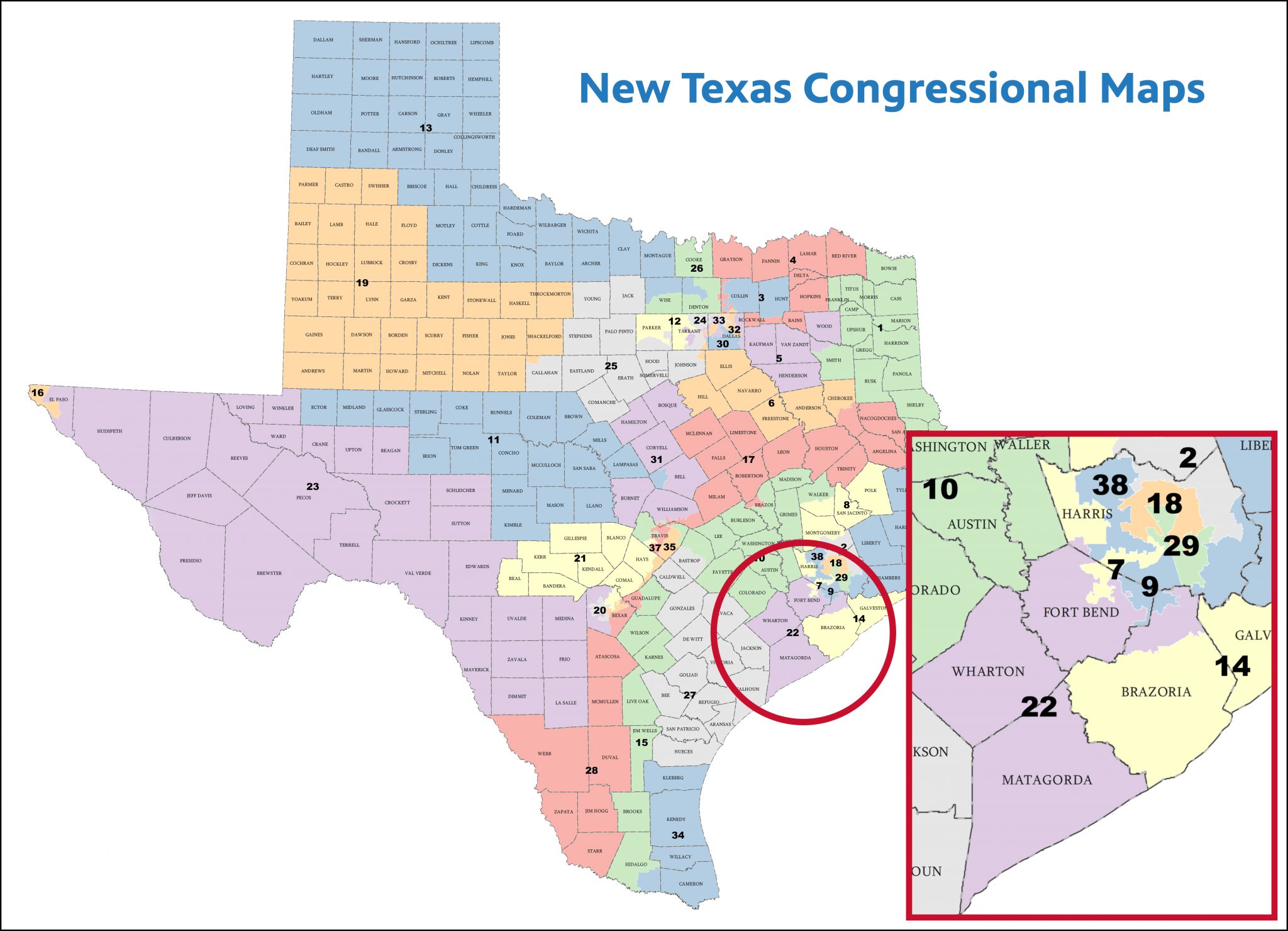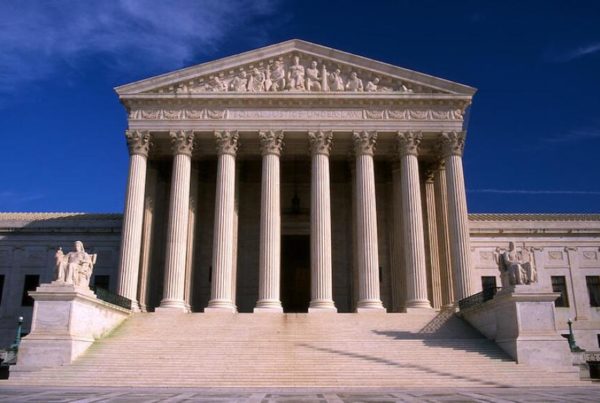People of color accounted for 95% Texas’ population growth over the past 10 years. Yet, when lawmakers met to redraw the state’s congressional maps, they actually created more white-majority districts.
Nowhere was that more evident than in Fort Bend County, southwest of Houston.
The county, which sits at the heart of Texas’ 22nd Congressional District, is home to the state’s biggest Asian American population, including large numbers of immigrants. Nabila Mansoor, president of the Asian-American Democrats of Texas, said she’s lived in the district for more than 20 years, and has seen it change dramatically over that time.
“When I first came here, this area of Highway 6 behind us was all green pasture,” she said, speaking while sitting in Sugar Land’s Cafe Yasmeen, “There was a sign that said, ‘Don’t Pick Up Hitchhikers,’ because there was a prison here. And all of that is now gone, and we are sitting in a shopping plaza with just a lot of different stores from South Asia or South Asian backgrounds. It is just a completely different monster now.”
Mansoor was highly active in encouraging her fellow South Asian residents to participate in the 2020 Census, in anticipation of this year’s congressional redistricting process.
“The idea was that if we all got counted, then that would translate into some real political power once those lines were redrawn,” Mansoor said.
Niloufar Hafizi was also involved in the redistricting process. An attorney with the Muslim-American advocacy group Emgage Texas, Hafizi testified before both the Texas House and Texas Senate redistricting committees.
“Our position has been that given the explosive growth of, the around 84% growth of the Asian American population in Fort Bend, those communities should have been kept together,” Hafizi said.
But that didn’t happen. Instead, lawmakers did what’s called “cracking,” splitting the Asian-American community among three congressional districts: the Democratic 7th and 9th, both tied to Houston and Harris County, and the Republican 22nd. The part of Fort Bend in the 22nd is now tied to rural, whiter and traditionally conservative Wharton and Matagorda counties to the south and west.
“I don’t know how to say this in a different way, but it whitens the district,” Hafizi said. “It increases the amount of Anglo representation in the district.”
That could have serious ramifications for Asian Americans in the district. The 2020 Republican primary election runoff between then-Fort Bend County Sheriff Troy Nehls and Kathaleen Wall was rife with anti-Asian overtones, she said.
“There was a lot of language about how Asians are responsible for the coronavirus and the use of ‘kung flu’ as a campaign slogan for one of them, and both of them seem to condone that language and either use it or let it slide,” Hafizi said. “That’s the sort of overtures to hate speech that we see when there is no incentive for a particular candidate or group of candidates to look at their entire district.”
The 22nd district was a safe Republican seat for decades, reelecting such conservative stalwarts as congressmen Tom DeLay and Pete Olson. But in 2018 and 2020, the district became highly competitive. Democrat Sri Preston Kulkarni came close to flipping the seat both times.
Kulkarni won’t be a candidate again in 2022 – he’s taken a post with AmeriCorps in Washington, D.C. But even if he were to run again, his chance of a breakthrough would be far slimmer. Hafizi says Republicans made sure of that.
“Our concerns are that it has been redrawn explicitly to keep Troy Nehls in office as a Republican,” Hafizi said.
Political scientists agree. The old district boundaries essentially split Democrats and Republicans 50-50 at the presidential level, according to Craig Goodman, who teaches political science at the University of Houston at Victoria. The new boundaries shift the district to give Republicans a 16-point advantage at the presidential level.”
Republicans did the same thing elsewhere in the state, strengthening their holds over vulnerable suburbs.
“From Dallas-Fort Worth to the 2nd Congressional District, also in Houston, we’re seeing this broader pattern of shoring up these districts that were trending Democratic and figuring out ways to kind of move enough voters around to basically allow Republicans to maintain the status quo,” Goodman said.
That suits Republicans just fine.
“In a county that began going Democrat back in 2016 with Hillary Clinton, and then it got worse in 2018 and then in 2020, CD 22 is the one thing that we have to be proud of as conservative Republicans,” said James Pressler, a precinct chair based in Sugar Land’s Greatwood neighborhood and a former candidate for Fort Bend County tax assessor-collector.
David Vrshek, another GOP precinct chairman who lives near Richmond in unincorporated Fort Bend County, argued it’s vital that Republicans press their advantage in redrawing legislative boundaries. And, he said, Democrats who complain about GOP lawmakers drawing boundaries are being hypocritical.
“You can go look at Illinois,” Vrshek said. “Illinois had 14 Republicans. They’ve redistricted the 14 Republicans into seven districts. So, you know, they complain about redistricting in Texas, and at the same time, they turn a blind eye to redistricting in Illinois and other places.”
Still, Asian American Democrats, like Nabila Mansoor, argue the 22nd district is an egregious example. Mansoor herself was redrawn out of the district: Under the new map, her home has been moved into Congresswoman Lizzie Fletcher’s 7th District.
“I do a lot of voter registration,” Mansoor said. “And part of what I do on the ground is trying to make sure that people that are young or people that just moved here understand that they actually have a vote and that their vote counts. Being put in Congressional District 7 makes it more difficult for me to make that argument.”
As for Asian Americans who remain in the district, Mansoor said the new map has weakened their ability to elect a representative of their own choosing.
And unless the courts overturn the new map, that’s likely to remain true for at least another 10 years.
“What’s actually happened is that even though we’ve seen the population grow and really been charged by immigrants,” she said, “those lines, when they were redrawn, have been redrawn in a way such that it’s actually diluted our power.”














